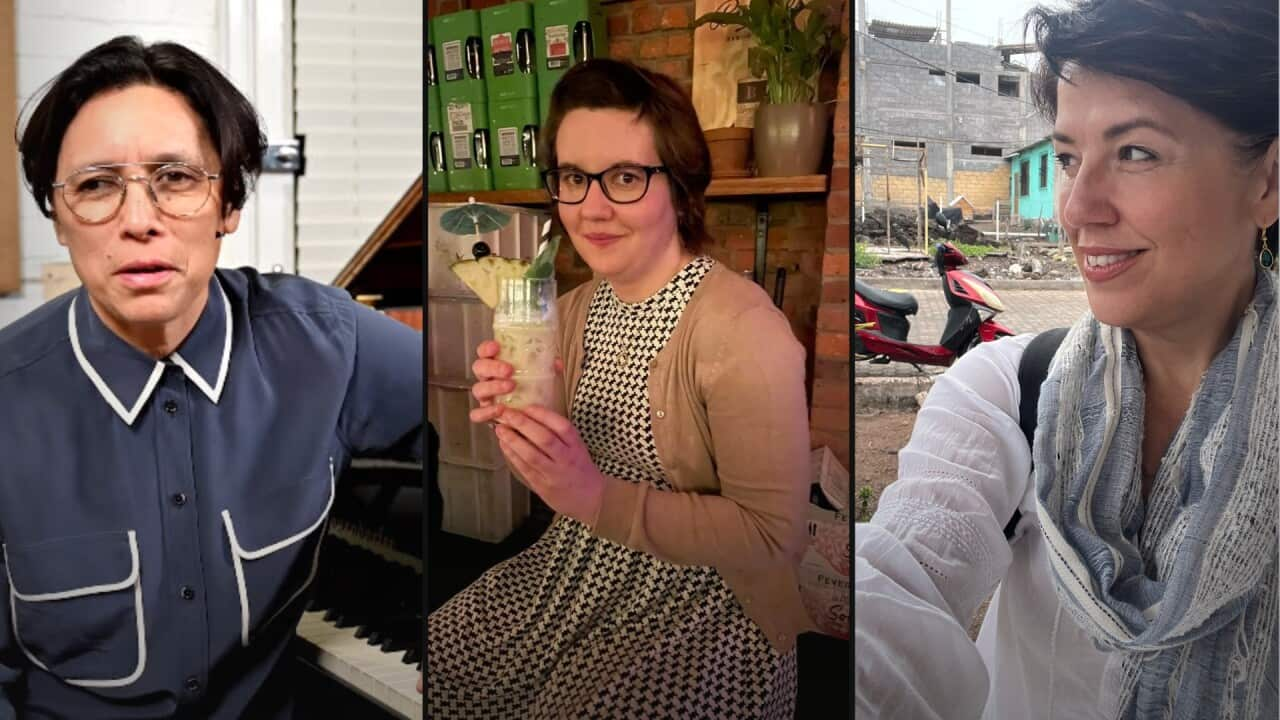Watch Insight's episode AI: Friend or Foe? on SBS On Demand
My partner Prue and I always knew we wanted to be mothers; it was just a question of when, who and how.
When I was in my mid-20s, my menstrual cycles were worsening, with heavy bleeding and pain. After laparoscopic surgery in late 2019, I was , adenomyosis and .
The doctor asked about my fertility plans and suggested I try to conceive sooner rather than later.
We booked an appointment with a fertility clinic and our journey started.
At the beginning, we were filled with hope and excitement at the prospect of starting a family.

Lisa (right) and Prue (left) were introduced to the idea of the use of AI in the process of creating embryos. Source: SBS
We hit the jackpot and ended up with 11 embryos, more than we expected.
Enter Artificial Intelligence
With this success, our fertility doctor told us about an artificial intelligence (AI) program that could grade the quality of our embryos with high accuracy.
The AI algorithm relies on tens of thousands of historical embryo images and based on that data, could determine if our embryos were likely to lead to a genetically normal pregnancy.
We thought, if AI could enhance this part of the process, then why not? It would hopefully minimise the number of transfers needed and give us the best chance of success.
The morning of our first transfer, we were nervous but it was a simple procedure that was over in minutes.
Then the two-week wait began.
We were told this could be a really anxious time; I questioned every sensation and wondered if I was pregnant or not.
Unfortunately, the results were negative. We were sad but optimistic and scheduled the second embryo transfer for the following month. But on the morning of the transfer, we learned we lost an embryo to the thawing process.
We were devastated.
But after the third embryo transfer, we found out that we were pregnant.
We were ecstatic.
An emotional roller coaster
It wasn't long before our world came crashing down, as my hormone levels were low and rising slowly - the doctors explained that this typically indicated a non-viable pregnancy.
We felt like we were on an emotional roller coaster as we endured seven weeks of living in limbo - pregnant but … not.

The couple used an AI program to help in their pregnancy journey. Source: SBS
The fear and anxiety were extreme.
Then, while sitting in a crowded waiting room for an appointment, the ticking time bomb went off.
I started bleeding heavily and had intense abdominal pain. They called it, 'a miscarriage of unknown origin'. The finality of it came crashing down.
We went home and snuggled our animals and each other. We were utterly exhausted and ready to sleep for a week.
How do you cope with multiple rounds of failed IVF?
The first round, I was kind to my body and mind.
I accepted that this was an unknown experience. It was as though my doctors were trialling a science experiment, not knowing exactly how my body would respond.
We tried to transfer a high-quality embryo and there was no implantation at all. Thanks to the AI program, we knew it was not an embryo issue but a host issue.
My body wasn’t an optimum environment for the embryo to grow in.
In the second round, we knew a little bit more so my medications were tweaked and implantation was successful - I was pregnant, just not in the right spot.
Both Prue and I are realistic people with health backgrounds, this helped us process the information about viability and outcomes.
Despite the struggles, uncertainty, doubt, and pain; there was hope, excitement, and a sprinkle of joy - we told ourselves, 'one more round before having a break to reset'.
Physically, mentally and financially, we were feeling burnt out and had almost given up hope. We were passengers on the fertility train, with no control over the destination.

Prue, Lisa (right) and baby Sullivan. Source: SBS
Taking a different approach
When it was time for round three, our fourth embryo, I had tried the 'rest, sleep, eat well, and repeat' cycle twice already with no results. So I flipped everything on its head for this last try before having a break.
I did not rest.
My transfer date fell between night shifts. I went to the clinic after working all night, had the transfer, went home to sleep, and then went back for another night shift. It seems silly, but in a way, I needed to keep moving, any nervous or anxious energy was minimal because my mind was busy and focused on work.
That may have been our recipe for success.

Baby Sullivan was born in early 2023 after multiple rounds of IVF. Source: SBS
We now feel like the roller coaster was worth every sacrifice.












